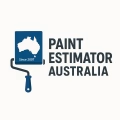For painters in the sports facility and court-marking industry in Strathalbyn, understanding markup and profit margins is crucial to ensuring the financial success of your projects. Markup and profit margins are essential concepts in business, impacting your pricing, project estimates, and ultimately, your bottom line. This article will explore these concepts in detail, providing you with the knowledge to make informed decisions and ensure your business remains profitable and competitive.
Understanding Markup
Markup is a critical concept in business and refers to the percentage by which you increase the cost of a product or service to arrive at the selling price. It is a way of covering your costs and generating profit. The formula for calculating markup is as follows:
> Markup Percentage = [(Selling Price – Cost Price) / Cost Price] x 100
For example, if a paint job costs you $100 in materials and labour, and you sell the service for $150, your markup is:
> [(150 – 100) / 100] x 100 = 50%
So, a 50% markup on your costs results in a selling price of $150. Understanding your markup percentage is vital for setting prices, ensuring you cover your expenses and make a reasonable profit.
Factors Affecting Markup
Several factors can influence the markup percentage you apply to your painting projects:
- **Overhead Costs:** These are the ongoing expenses incurred to run your business, such as rent, utilities, insurance, and marketing. A higher overhead will generally require a higher markup to ensure these costs are covered.
- **Competition and Market Demand:** The level of competition and market demand for your services can impact your markup. In a highly competitive market, you may need to accept lower margins to win contracts.
- **Specialty Services:** If you offer unique or specialised services, such as sports court markings, you may be able to command a higher markup due to the added value and expertise required.
- **Volume of Work:** A higher volume of work can often lead to economies of scale, allowing for a lower markup while still maintaining profitability.
- **Risk and Uncertainty:** Riskier projects or those with uncertain outcomes may warrant a higher markup to compensate for the potential challenges and unexpected costs.
Calculating Profit Margins
While markup is essential for setting prices, profit margin is the metric that indicates the financial health of your business. Profit margin represents the percentage of revenue that turns into profit after all expenses have been accounted for. It is calculated as follows:
> Profit Margin Percentage = (Net Profit / Revenue) x 100
Using the previous example, if your selling price is $150 and your total costs (including materials, labour, and overheads) amount to $120, your profit margin is:
> [(150 – 120) / 150] x 100 = 20%
So, a selling price of $150 with total costs of $120 results in a 20% profit margin. This means that for every $150 job, your business retains $20 in profit.
Managing Profit Margins
Maintaining a healthy profit margin is vital for the sustainability and growth of your business. Here are some strategies to manage and improve your profit margins:
- **Accurate Cost Estimation:** Ensure you accurately estimate the costs of a project, including materials, labour, and overheads. A painting estimator or paint quantity calculator can help with this.
- **Streamline Operations:** Review your processes and identify areas where you can reduce waste, improve efficiency, and lower costs without compromising quality.
- **Negotiate Better Rates:** Build relationships with suppliers and negotiate better rates for materials and services. Bulk purchasing can often lead to discounts.
- **Specialise and Diversify:** Offering specialised services, such as sports court markings, can attract higher margins. Diversifying your services can also help mitigate risk and provide additional revenue streams.
The Importance of Accurate Estimates
Accurate estimates are critical to ensuring your projects are financially viable and your business remains profitable. Underestimating costs can lead to thin profit margins or even losses, while overestimating can make your quotes uncompetitive. Here are some tips for creating accurate estimates:
- **Use a Painting Estimator:** Utilise a specialised painting estimator or paint quantity calculator to accurately determine material and labour requirements for each project.
- **Consider Specialty Coatings:** If a project requires specialty coatings or primers, factor in the additional costs and application rates.
- **Account for Waste and Overage:** Include a buffer in your estimates to account for potential waste and overage. This ensures you don't incur unexpected costs.
- **Detail Labour Requirements:** Properly assess the labour needed for each project, considering the skill level required, site conditions, and potential productivity factors.
Factor in Primer and Specialty Coatings
When estimating the costs for a painting project, don't forget to include the cost of primer and specialty coatings. Primer is essential for ensuring a durable and long-lasting paint job, especially on new surfaces or when covering significant colour changes. Specialty coatings, such as anti-graffiti coatings or non-slip coatings for sports courts, can also add to the overall cost.
To estimate the quantity of primer required, you can use a paint quantity calculator or painting estimator. These tools consider the surface area to be covered, the recommended spreading rate of the primer, and the number of coats needed. For specialty coatings, consult the manufacturer's recommendations and application rates to determine the required quantity accurately.
By accurately estimating the costs of primer and specialty coatings, you can ensure your quotes are competitive while maintaining a healthy profit margin. This attention to detail will reflect the professionalism and expertise of your business.
FAQs
How do I set a competitive price for my painting services?
Setting competitive prices involves striking a balance between covering your costs, making a reasonable profit, and remaining attractive to customers. Understand your costs thoroughly, including materials, labour, and overheads. Apply a markup that considers your unique business circumstances, the level of competition, and the value you offer. Continuously review your pricing strategy and stay attuned to market demands and changes.
What is a good profit margin for a painting business?
A good profit margin for a painting business will vary depending on factors such as the scale of operations, specialisation, and local market conditions. As a general rule of thumb, a profit margin of around 10-20% is considered healthy for a small business. However, it's important to remember that profit margin is just one metric, and you should also consider cash flow, return on investment, and revenue growth.
How do I improve my profit margins?
Improving profit margins involves a combination of strategies, including accurate cost estimation, streamlining operations, and negotiating better rates with suppliers. Diversifying your services and specialising in certain areas can also help improve margins. Regularly review your business processes and financial metrics to identify areas for improvement and maximise your profitability.
What is a painting estimator, and how does it help?
A painting estimator is a tool that helps painters accurately estimate the costs and requirements of a painting project. It considers factors such as surface area, paint coverage rates, labour rates, and specialty coatings. By using a painting estimator, you can create detailed and competitive quotes, ensuring you cover all your costs and maintain profitability.
How do I account for primer and specialty coatings in my estimates?
Primer and specialty coatings can add significant costs to a project, so they must be factored into your estimates. Consult the manufacturer's recommendations for application rates and coverage. A paint quantity calculator can assist in determining the required quantities, ensuring you order enough materials and avoid unnecessary waste.
Key Information
| Project Type | Surface Area (m²) | Recommended Primer | Specialty Coatings |
| ———— | —————– | —————— | —————— |
|---|---|---|---|
| Outdoor Arena | 1000-1500 | EP200 Epoxy Primer (1 coat) | Anti-Graffiti Coating |
| Running Track | 2000-2500 | A2000 Acrylic Primer (1 coat) | Line Marking Paint |
| School Hall | 800-1200 | U400 Universal Primer (2 coats) | Low-Odour Formulas |
| Car Park | 1500-2000 | CP100 Chlorinated Rubber Primer (1 coat) |
| Indoor Court | 500-700 | P500 Primer (2 coats) | Anti-Slip Coating | | Outdoor Arena | 1000-1500 | EP200 Epoxy Primer (1 coat) | Anti-Graffiti Coating | | Running Track | 2000-2500 | A2000 Acrylic Primer (1 coat) | Line Marking Paint | | School Hall | 800-1200 | U400 Universal Primer (2 coats) | Low-Odour Formulas | | Car Park | 1500-2000 | CP100 Chlorinated Rubber Primer (1 coat) |



